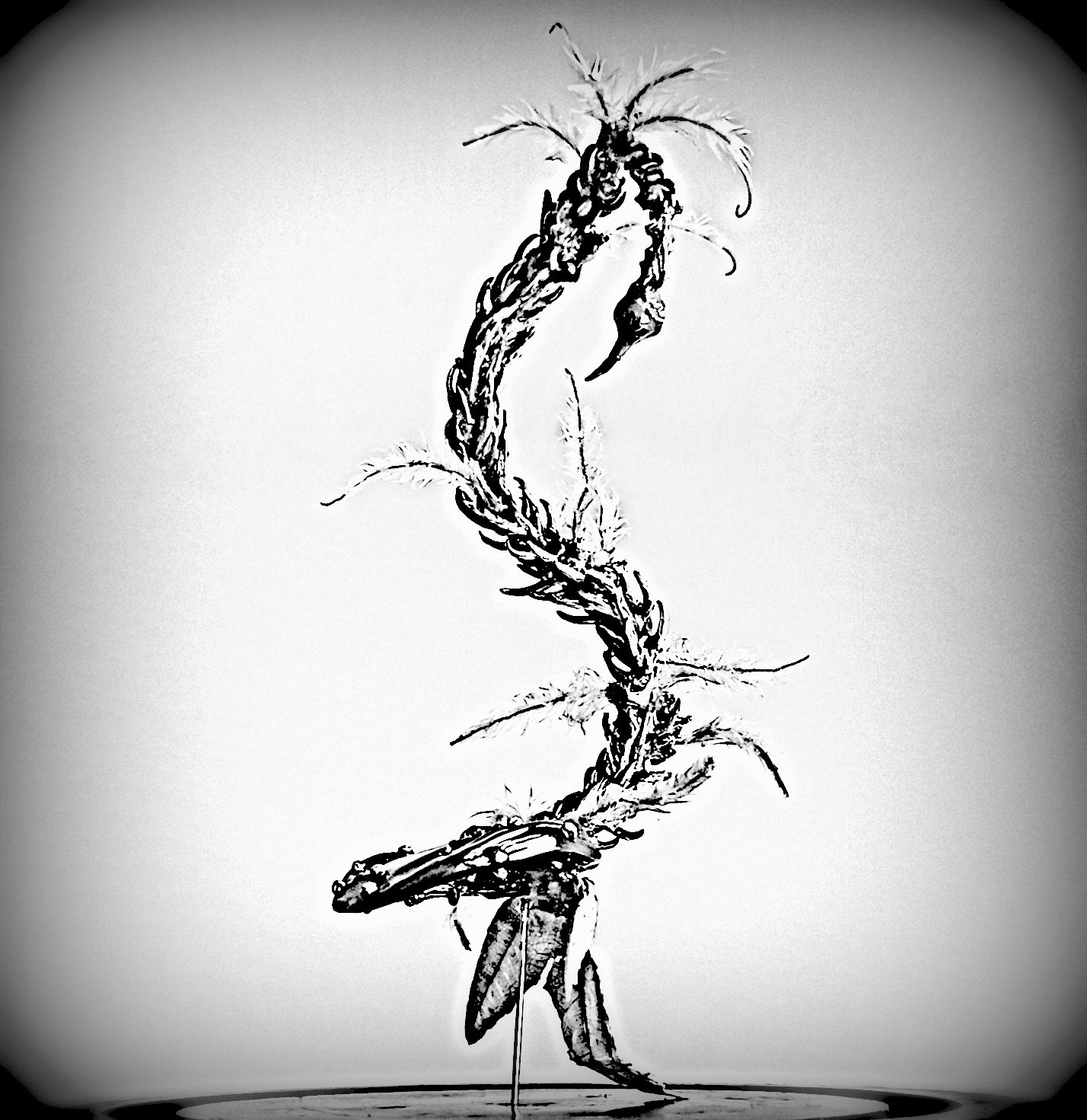Common Name: Feather Shark
Scientific Name: Etmopterus pluma
Specimen Length: 17.8cm
Specimen Sex: Female
First Described: AD 2036
Description and Habitat: Evolved from a sub-species of Lantern Shark, Etmopterus pluma is a deep-sea shark inhabiting the bathypelagic zone at depths of 1,000-4,000m in the Atlantic, Indian and Pacific oceans.
Thought to have been in existence for hundreds of millions of years, it was only discovered during the Great Deep Sea Metals Rush of the early 21st century, when polymetallic nodules (two-dimensional mineral deposits containing nickel, copper, manganese, cobalt and molybdenum) were discovered sitting on abyssal plain sediments at about 3,500–6,000m deep. Even though scientific studies warned such mining would almost certainly result in an irreversible loss of species and ecosystems, (at that time around 88% to 92% of species in the zone had never been seen before), the destruction was excused as a way to stop our reliance on fossil fuels and allowed to go ahead; this was before The Great Collapse when there were many ill-fated and/or even pernicious attempts to “Save the Planet” which, of course, ultimately failed.
Fortunately, however, Feather Sharks survived, albeit most successfully in the giant aquariums of the ARK DNA Banks which were responsible for storing so many of the Old World species and was reintroduced into the wild several decades ago, with IUCN RedList Reintroduction Completion status awarded in AD 2259.
E. pluma spend most of their time on the ocean floor, usually resting on their three pectoral fins and have light-emitting photophores (organs that produce light via symbiotic bacteria capable of bioluminescence) scattered around the base of their 12 feathery esca, an external gill system that extracts oxygen from the surrounding water. Whilst the light is used for several purposes - to attract mates, communicate with other Feather Sharks, and confuse predators - the pale yellow esca’s other purpose is for predation, wrapping themselves around any prey that comes near, usually nekton such as krill hybrids, cephalopods, small crustaceans, and small teleost fish. Once entrapped, a touch from the venomous tip of the tail causes temporary paralysis, allowing the delicate fronds to pass the unfortunate captive along to its mouth to be eaten.
Living in the dark at great depths E. pluma does not have eyes but its head is dotted with over-developed ampullae of Lorenzini, jelly-filled canals connecting sacs on the skin’s surface to sensory bulbs that detect electrical fields, making them highly sensitive to other animals in the vicinity, as well as the earth’s magnetic pull, thought to aid navigation. Studies have shown they aggregate around deep sea Quantium cables, vast networks collecting quantum data to better understand the earth’s connection to other planets in our solar system, and in turn, our own mysterious origins. These cables are equipped with transponders that send signals when dual wave-particle impulses are detected during seismic events, and footage shows these sharks are particularly attracted to this energetic pull.
Believed to have evolved during the mid-Miocene period, around 15.97 million to 11.6 million years ago, Etmopterus pluma is considered a particularly unique shark species. In its juvenile stage, such as the example here, the skeletal fins are highly exposed, giving the body a spiney appearance. This caused it to be initially misidentified as a fish of Scorpaenidae heritage, but as it gets older and more fleshy, it starts to look more like a true shark and as an elasmobranch, each of these spines are not made of bone but cartilage.
Reproduction: Etmopterus pluma reproduce ovoviviparously. Male and female have their cloaca on the underside of their bodies, hidden beneath the skeletal fins, and mate by the male inserting its clasper into the female, the skeletal fins interlocking to aid the process. The eggs are hatched inside the mother, nourished from yolk sacs until birth. Females bear litters of two or three young, each measuring 5.5–6.0 cm (2.2–2.4 in) long.
Lifespan: Approximately 15 years.





